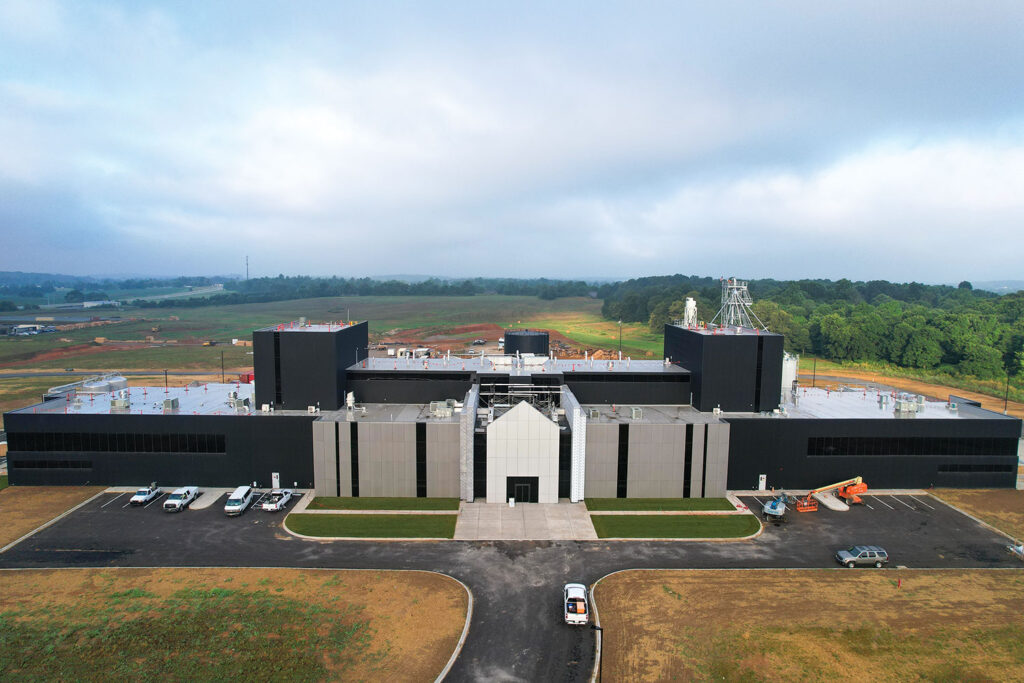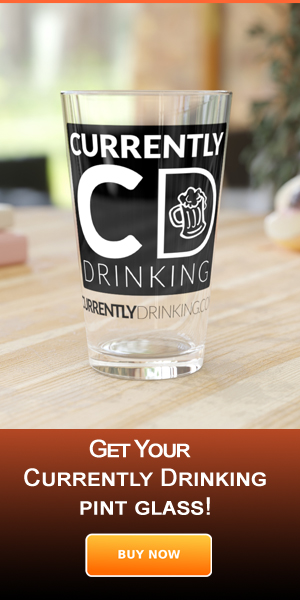[ad_1]
American whiskey is in a bizarre place. Penning this function in 2024, I’m tempted to recycle the same piece I did on craft beer circa 2017.
It’s not unusual to say that the whiskey trade is 5 to seven years behind craft beer by way of tendencies. Some details immediately do echo what the brewers confronted when issues began turning south for his or her enterprise.
To listing just a few: There’s too many producers innovating with too many merchandise whereas customers have pulled again in spending. These customers more and more choose a handful of favourite bottles reasonably than experimenting throughout manufacturers. Business development has leveled off at a time when many suppliers have considerably expanded manufacturing. Different, trendier classes — tequila, no/low alc, THC drinks — have siphoned off shopper consideration and spending. The American Craft Spirits Affiliation reported final month that U.S. craft spirits gross sales are now in decline.
Does all this spell hassle for American whiskey? Will the trade fall into the same lure as what has occurred with craft beer?
Relies upon. Critically, not all of the details are good parallels. Whereas related headwinds actually exist, American whiskey just isn’t in the very same precarious spot as what beforehand befell craft beer.
“It’s important to watch out when evaluating our trade with others,” says David Mandell, co-founder and CEO of Whiskey Home, a newly constructed whiskey manufacturing facility that focuses on sourcing, able to producing 112,000 barrels per yr (with the potential to increase to greater than 224,000 barrels). “We now have very totally different circumstances.”
“You might have additionally bought to watch out when proclaiming present damaging issues everlasting,” he provides. “The whiskey trade is topic to fluctuations in spending, like anything. However cocktail tradition isn’t going wherever. And there’s no query that premiumization is a factor now.”
So how greatest to explain the present state of the U.S. whiskey trade?
“I wish to be truthful and say its dynamic,” says Dave Schmier, founding father of Redemption Rye and Proof & Wooden Spirits. “There’s plenty of undertow proper now. You can slice this up plenty of methods. As dangerous as something is, there’s nonetheless an unlimited quantity extra of data and keenness within the customers within the market now. That’s not unexpectedly going away.”
“Will these folks purchase on the identical price as two years in the past? No,” he provides. “The numbers inform us that gross sales are down. Is it equal throughout all value ranges? No. However nonetheless, as an entire, the class is down. $80 to $100 has been hit the toughest. However there are nonetheless bottles on the market that individuals will knife one another for. That’s the constructive.”


What’s Happening Out There?
Like many different industries, American whiskey loved a gross sales increase in the course of the Covid period. Shoppers sheltering at dwelling constructed out backbars and have become bourbon consultants by becoming a member of whiskey social media teams in droves. Single barrel retailer picks took off. Everybody purchased 100 bottles (figuratively talking).
As we speak, there’s little room left in again bars and basement bunkers for brand new purchases. Retailer picks saturated the market, reducing the joy for this previously scorching development. And with the U.S. financial system in an odd place itself, customers not spend as liberally on whiskey.
However they do spend. How so is fascinating, and factors to a peculiar future for the trade.
Throughout a panel of trade consultants hosted by Distill Ventures (a drinks accelerator backed by Diageo) in NYC this previous spring, the topic of whiskey’s future was mentioned. On the panel was veteran whiskey author Noah Rothbaum, creator of Artwork of American Whiskey. He noticed similarities with craft beer again within the day.
“I keep in mind asking the brewers, ‘Why are you making so many beers that no person needs?’” Rothbaum says, recalling that trade’s over-innovation challenge. “They had been brewing beers not for customers, however to indicate off.”
Is whiskey in the same scenario now? “I feel we’re nonetheless scratching the floor by way of whiskey drinkers in America and the world,” Rothbaum says. “Individuals are shopping for whiskey with peanut butter or cinnamon spice blended in. That’s an excellent signal to me, as a result of these individuals are going to graduate to raised whiskeys as they become older.”
Which raises the query: Will Gen Z drinkers ultimately put down their canned cocktails and nonalcoholic beers for a premium whiskey? The issue could also be their dad and mom.
“There’s politics in what you drink,” says panelist Clay Risen, who covers spirits (and obituaries) for The New York Instances. “Folks rage in opposition to the idea of what their elders drank. Folks will reject whole manufacturers utterly if their dad and mom drank them. Gen Xers and Millennials drink bourbon. Gen Zers need one thing totally different. There’s alternative for different whiskey manufacturers to return in.”
Panelist Holly Seidewand, founding father of the boutique bottle store First Fill Spirits in Saratoga Springs, NY, observes youthful customers approaching whiskey in the same means that Millennials beforehand tore by way of craft beer.
“They arrive in saying, ‘What’s the most recent bottle? What’s the most recent end?” she says. “It’s consuming chaos.”
This is identical angle that gave rise to ruinous over-innovation in craft brewing: I by no means wish to drink the identical beer twice. Is that this an alarming echo for whiskey immediately?
“I feel innovation can decelerate,” Seidewand says. “There doesn’t should be one thing new popping out from a distillery each six months. You don’t want eight new expressions yearly.”
As for present shopping for patterns at retail, Seidewand sees a slowdown. “As a substitute of leaving with two bottles, now folks depart with one,” she observes.
On the identical time, nevertheless, innovation stays an essential a part of a whiskey’s promoting level. Manufacturers should seize shopper consideration from the crowded retail shelf, after which construct out a shelf on that shopper’s backbar with a number of totally different bottles to select from. On-premise accounts have additionally leaned into this gross sales technique.
Lodge ZaZa Dallas maintains a large whiskey choice. Company can take pleasure in personal tastings from a choice of greater than 1,000 whiskey labels from around the globe. What do friends choose as of late?
“At [our] eating places — Group Remedy, Dragonfly and Monarch — we give attention to providing whiskeys that bear a second maturation and have distinctive ending barrels,” says Dakota Marchio, director of meals and beverage at Lodge ZaZa. “Many of those distinctive finishes are restricted version and troublesome to seek out in retail, making our choice one thing they really can’t expertise elsewhere.”
“For personal tastings, my mates take pleasure in accumulating restricted annual releases and making a vertical tasting to match how totally different years have developed,” Marchio provides. “For on-premise tastings, customers are sometimes wanting to discover a model’s portfolio and style a variety of flavors that may come out of a single producer.”
That stated, on-premise operators have additionally observed a shift in shopper conduct.
Alex Guerra is COO of Breakwater Hospitality Group, which is behind John Martin’s in Coral Gables, FL. John Martin’s has greater than 400 whiskeys on the menu. “You already know, the market’s nonetheless robust, however individuals are positively being extra considerate about what they’re shopping for,” says Guerra. “It’s like when an everyday is available in and is aware of precisely what they need — there’s much less impulse and extra intention. They may not be shopping for as a lot, however after they do, they’re going for the great things. They need one thing that’s price their money and time, which I completely respect.”
“After all, with the financial system being what it’s, everybody’s maintaining a tally of costs, however I wouldn’t say of us are chopping again in an enormous means,” he provides. “Nevertheless, I’ve observed that individuals aren’t experimenting with high-end whiskeys as a lot as they used to. As a substitute, they’re searching for small-batch, lesser-known whiskeys that provide the identical style profiles as choose high-end choices however at a extra approachable value.”
At the same time as customers have develop into extra selective, many distilleries have elevated manufacturing. Buffalo Hint and Woodford Reserve each not too long ago doubled their distilling capacities, simply to call two main services. What does this imply at retail?
Talking on this subject not too long ago throughout an episode of our beverage journal group’s podcast, On & Off, was Marty Holland, retailer supervisor of The Social gathering Supply, a 110,000-square-foot impartial beverage alcohol retailer in Bellevue, KY “Demand is regular, merchandise are beginning to develop into just a little bit extra considerable,” Holland says. “As an example, the Buffalo Hint straight bourbon, that was a product we used to see on allocation as soon as 1 / 4. And now we’re not too long ago we’re beginning to see it as soon as a month, perhaps even twice a month . . . We’re actually seeing a development the place these merchandise are little extra broadly obtainable.”
“Clearly each distillery has discovered methods to extend capability within the final decade or so,” he continues, “whether or not that could be including vats, constructing rickhouses . . . We’re starting to see actually not an finish in demand however perhaps a rise in provide, which actually is welcome.”
Whereas provide has risen, many retail shops are nonetheless burdened with an overstocked gross sales ground, owing to Covid-era challenges.
“It was the right storm,” says Schmier of Proof & Wooden. “Gross sales had been up, demand was excessive, and provide chains had been disrupted. That led to retailers overbuying no matter they might. Now there’s that overhang left over that we now have to cope with. Overstocking in 2022 and 2023 is certainly part of what we’re dealing with immediately.”
Shops merely have an excessive amount of product now. When can we count on that to appropriate?
“I feel that may type itself out in about six to eight months,” says Mandell of Whiskey Home.
“I feel a variety of these merchandise need to go by the wayside,” he provides, additionally alluding to the trade’s over-innovation. “There shall be a pure contraction of merchandise and types created throughout Covid.
Educated Shoppers
Whereas we’re not all caught inside on our computer systems all day anymore like in the course of the pandemic lockdowns, that interval has left an enduring impression. Coupled with the bourbon increase, it’s led to customers immediately being as educated as ever.
“Let me let you know, folks immediately know their stuff,” says Guerra, of Breakwater Hospitality Group. “I’ve been behind the bar for 4 a long time, and I’ve by no means seen clients this clued-in. They’re not simply ordering a drink; they’re asking in regards to the mash invoice, the growing old course of, the place the barrels come from — all of it. And truthfully, I find it irresistible. It retains me on my toes, and it makes for some nice conversations.”
“Some of us actually know their stuff, whereas others are keen to experiment with style profiles they wouldn’t have touched 20 years in the past,” he provides. “Take the Previous Common, for instance. Folks are actually keen to strive variations with chocolate, orange, cherry and extra. Simply have a look at what number of bitter flavors are available on the market immediately. Again within the day, the fundamental Angostura bitter was all anybody knew. They’ve bought the data, and so they’re wanting to be taught extra, which is why it’s so essential for us to remain sharp and preserve providing them one thing new.”
Agreeing with Guerra is Marchio of Lodge ZaZa Dallas.
“As we speak’s customers are extra discerning than ever, due to the cocktail renaissance of the previous decade,” he says. “Bar employees and patrons are additionally extra educated with a wealth of data obtainable on-line and in printed media, this has elevated the appreciation of the spirit.”


The Way forward for American Whiskey
Shoppers that with that stage of schooling doubtless gained’t simply stroll away from the whiskey class. It’s one more reason why hardly anybody has referred to as the present state of the whiskey the start of the tip. Somewhat than considering a bubble is about to burst, most trade of us see our current points as a pure, rocky time of transition.
“I feel we’re in for a turbulent couple of years,” says Schmier of Proof & Wooden. “However so long as the neo-abolitionists don’t win, the class shall be stronger within the long-term.”
Schmier’s joke makes an excellent level. Prohibition 2.0 might be not within the offing. Folks will nonetheless drink whiskey, ideally of the premium selection. This means a sunnier future.
“Is that this a cyclical downturn or only a blip?” asks Risen of The New York Instances, in the course of the Distill Ventures panel. “I feel it’s extra the latter. I feel individuals are confused on this financial system. There are headwinds. Inflation is placing strain on customers. However the fundamental curiosity in whiskey will stick round. I feel whiskey is right here to remain, and particular person gamers will win or lose primarily based on the place they’re positioned.”
Development has come quick for Whiskey Home, which presents sourced manufacturers a state-of-the-art facility full with the power to regulate nearly each aspect of a spirit’s manufacturing.
“We’re nonetheless very bullish on the trade and its long-term prospects,” says Mandell of Whiskey Home. “Brief-term we now have street bumps coming off of Covid with extra stock in shops. Long run, the trade will stay robust.”
“We see development charges slowing and settling down into development patterns extra in keeping with what we had earlier than Covid,” he provides. “The basics of the American whiskey market are nonetheless robust.”
Characteristic picture by Stephen Ventura on Unsplash.
Kyle Swartz is editor of Beverage Dynamics. Attain him at kswartz@epgmediallc.com. Learn his latest piece, Wine Cellar Celebrates 50 Years of Success.
[ad_2]



